#diapsid
Text
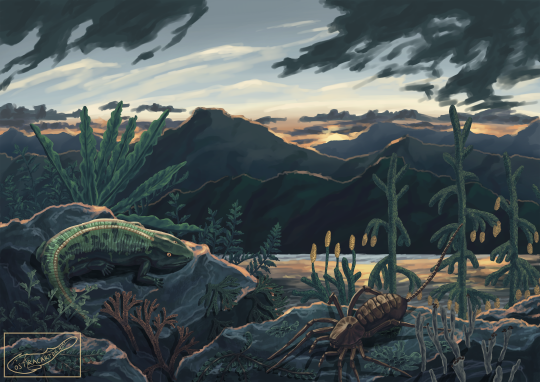
Permian sunset with Peltobatrachus and an early arachnid
#paleoart#peltobatrachus#amphibian#diapsid#tetrapod#arachnid#palaeoart#landscape#landscape art#plants#lycophytes#temnospondyl
331 notes
·
View notes
Text

Just an Ordinary Horse skull
2 notes
·
View notes
Text
Cute college student enjoying hardcore sex
NATI rosadita y mojada
Young Teen Couple Fuck with Cum on Ass
MAGRINHA SE EXIBINDO
Leche en el culo de mi amiga Sarita
This thot can really take dick
luxor casino las vegas pool
Pov fucked british slut
Busty Maid Brooke Wylde Rides Your Dick In POV BaDoinkVR.com
PISSING, CUM IN MOUTH AND PASSIONATE SEX IN BATHROOM WITH NAKED MIA BANDINI
#diapsid#Gal#nonimpacted#overmodernizing#Eiger#potamological#well-believing#well-coined#globosite#mixolydian#indelibleness#Amistad#Homorelaps#spirillosis#minhyuk#NSEC#base-witted#vinosulphureous#featherpate#arrendation
0 notes
Text








Comparing Superficial Traits From Opposite Ends of the Sauropsid Family Tree Through a Visual Medium to Make a Point
~OR~
Bird Are Reptiles: The Gifset
Footage Sources: (x)(x)(x)(x)(x)(x)(x)
#lizards#birds#dinosaurs#birds are reptiles#birds are dinosaurs#reptiles#diapsids#sauropsida#evolution#zoology#evolutionary biology#cassowary#green anole#monitor lizard#komodo dragon#seagull#chickens#grouse#peregrine op
48 notes
·
View notes
Note
Hi! I saw your post about the tiefling and wanted to ask: is a shofar from a dragon or an extinct animal, like a ram's ancestor, kosher?
Oh! This is a fun one.
Starting with the easier one -the ancient proto-sheep. But first, I would like to note that I am neither a biologist nor a rabbi, and while I have consulted (albeit minimally) with both for the making of this post, I am not the best source. I can provide links to some useful reading, but tumblr being tumblr, with the link-eating that that entails, I will not be putting the links in the post itself.
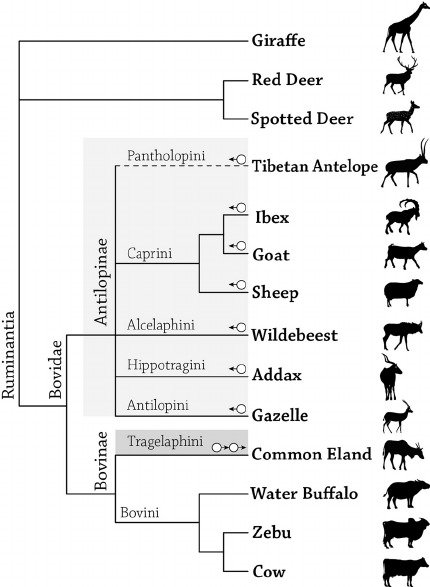
This is the family tree map of the suborder Ruminantia.
As previously established, sheep are valid sources for a shofar. So too are goats and ibices (if I'm going to pretend to be scholarly, I'm going to use the technically-correct Latin plural) -the mishna even specifically addresses ibex horn as a possible source. Thus if our proto-sheep is still within tribe Caprinae, it is a valid source for a shofar.
What I did not address on the other post is that kudu (and gazelles, oryxes, etc) are also acceptable source animals for shofars. Antelopes, like bovines and caprines, have horns, rather than antlers. The requirement for the shofar is that it be a horn, not a bone -that the bone be covered with a keratin sheath. We can thus move further backwards, and authorize any ancestor still within sub-family Antilopinae.
And here is where we need to take a step out of modern science. The laws of kashrut predate genomics, and are often more rooted in morphology than phylogeny. A whale is not an unkosher animal, it is an unkosher fish, because it is fully aquatic. A bat is not an unkosher animal, it is an unkosher bird, because it is a warm-blooded flying creature.
Halachically speaking, if it looks like a cow and acts like a cow, and has the general criteria we associate with a cow, it's a cow. And cows are not acceptable source animals for shofars.
So if we move further back and reach a common ancestor in the family Bovidae, whether it's an acceptable source for a shofar depends on how cow-shaped it is. An aurochs, for instance, is a cow. While I was unable to find any sort of artistic rendering of the presumed last common ancestor at the divergence of Bovinae and Antilopinae, the earliest bovid I could find was Eotragus sansaniensis, which definitely seems closer in shape to an antelope than a cow. It is thus theoretically possible that an ancestral species in Bovidae might be permissible, with more cow-shaped bovines being specifically set aside from the rest of their family -in much the same way that we colloquially apply the term "reptile" to all non-bird modern diapsids. If that is the case, we would then move backward to the last common ancestor of bovines and cervines in suborder Ruminantia. (We might then be able to move forward along the deer tree until antlers diverge from horns, but that is not an ancient sheep, it's an ancient deer.)
We've got our rules on animals. Now we look at the shofar itself. Optimally, the shofar is curved, rather than straight. A straight shofar meets the technical requirements, but if you want to be as stringent as possible, a curved shofar is better. (That said, eland and gemsbok shofars are incredibly striking.) Per the mishna, even ibex horns are considered too straight to count as curved for this particular discussion -and ibices are specifically discussed as an acceptable source. (We used to use shofars for more purposes than we do today. There was a discussion about when to use the straight one vs the curly.)
Now, given that the shofar-making process usually involves some degree of straightening it in order to hollow out the mouthpiece, there is room for debate here. There are those communities and individuals who prefer striking or resonant shofars, and thus accept the larger ones obtained from various antelopes. There are also those communities that ban even a minimal amount of straightening of a ram's horn. Once we're arguing specific stringencies with common precedent for the lenient opinion, though, I think we can say we're in the clear for permissibility.
However. The previous post mentioned the issues with lacquering and otherwise decorating a shofar, which gets into another concern. Namely, the horn being used cannot possess any cracks or breaks from the end of the mouthpiece until one is past the minimum required length for a shofar.
And, unfortunately, old bones that have been around for millennia tend to have some wear and nicks on them, often of the sort that would invalidate a shofar for use.
So in conclusion, one can use the horn of any proto-sheep still within Ruminantia, unless they were too cow-shaped before diverging within Bovidae, in which case, one can use the horn of any proto-sheep within Antilopinae. But it must have either been phenomenally well-preserved, or the proto-sheep must have lived close enough to contemporaneously with the maker of the shofar that the horn has not sustained damage in the interim -ie, this must be a story involving time travel, cloning, or some sort of alternate history situation.
This is long enough already, so I will reblog with my thoughts on dragons in a separate post.
#my biologist consultant has requested that I point out that there are extinct non-diapsid reptiles#but recognizes the point I am making#my rabbi consultant is just amused by the discussion#Silamy likes to ramble#longpost#speculative halacha
22 notes
·
View notes
Text
the imagery of tiny baby drath wrestling a grown man to the ground and mauling him like a rabid dog gives me so much dopamine bro. . . . .
#she really was a goblin child thank god that phase was 300 million years ago#shes synapsids and diapsids problem now#tho tbh i sometimes want to change her age and then other times im happy with it#;; ooc.
5 notes
·
View notes
Text



thinking about carnivorous/omnivorous/mammalian/reptile skulls
#hey your diapsid bear fucking committed terrorism on me. are you going to do anything about this#star trek dragon au#dragons#alien redesign
1 note
·
View note
Photo
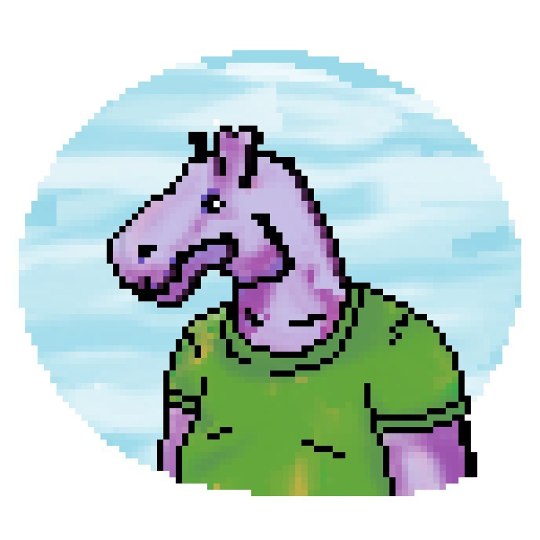
█ Pay_de_Menta_-_ESTEMMENOSUCHUS.bmp █ Haciendo un poco de pixel de nuevo 🤓👾Ilustrando al Estemmenosuchus, un sinápsido del pérmico medio █ #art #myart #myartwork #paleontology #synapsids #synapsida #diapsida #diapside #estemmnosuchus #pixel #pixelart #8bit #8bitart #paleoart #illustration #artoninstagram #illustrationoftheday #ilustracion #ilustraciondigital #popart #ilustradoresmexicanos #artedigital #digitalart #artepop #ilustração #ilustrazione #paleoarte #illistrationoninstagram #diapsidé #myart🎨 https://www.instagram.com/p/CkwoWLpDy9S/?igshid=NGJjMDIxMWI=
#art#myart#myartwork#paleontology#synapsids#synapsida#diapsida#diapside#estemmnosuchus#pixel#pixelart#8bit#8bitart#paleoart#illustration#artoninstagram#illustrationoftheday#ilustracion#ilustraciondigital#popart#ilustradoresmexicanos#artedigital#digitalart#artepop#ilustração#ilustrazione#paleoarte#illistrationoninstagram#diapsidé#myart🎨
0 notes
Text


Captorhinus skulls with pyrite and calcite crystal growth.
Captorhinus were anapsids from the Permian - meaning their skulls did not have the normal fenestration that diapsid reptiles or synapsid mammals have. Named for their hooked snout, these reptiles had a pineal(or "third") eye - a small photoreceptive spot on the top of the skull not seen in the pictures here.
426 notes
·
View notes
Note
What do you think of the official Legendary godzilla skeletal anatomy?
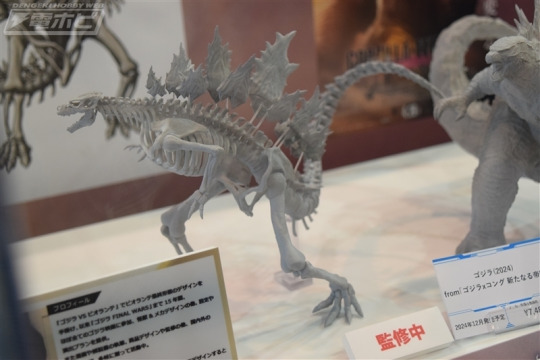
Also based on the skull anatomy Legendary seems to be some sort of Archosauromorph but im not sure since i cant find any close up photos of the skull but this is the best i can analyze
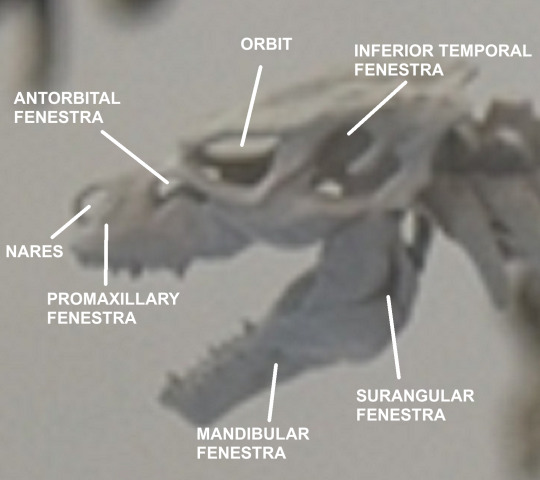
Oh dang how come I never heard about this till now?!
The skeleton seems really chimeric, with the skull being very diapsid-like, but the hips and lack of gastralia are very mammalian or synapsid-like. A view of the top of the skull might be the deal breaker, since whether or not it has 2 or 4 temporal fenestra would determine if it’s a diapsid or synapsid.
But legendary Godzilla also has gills (although whether or not they’re homologous to fish gills is up for debate), and considering such a large species would have a long lifespan and thus evolve slower and that Godzilla’s species evolved in the Permian, there’s also the possibility that it’s descended from something much more ancient and just convergently evolved these skeletal features. Amniote of some kind is a potential answer, but an amphibian shouldn’t be ruled out.
#godzilla#kaiju#daikaiju#kaijuthespacemaniraptorian#speculative evolution#speculative biology#speculative anatomy#skeletons#skulls#legendary godzilla
52 notes
·
View notes
Text

Mimics have an incredibly confusing anatomy, its a complete mess. Lavender is the only known Mimer out there, and we decided to dissect and skin him alive (he wasnt harmed, we put his skin back after this, ''we'' referring as to myself, the artist)
For starters, they're hard to pin in the tree of life, as they share so many features with an absurd amount of animal groups that its just hard to be sure what they truly are. Mimers/Mimics are very much reptile like, their skull is similar to a diapsid one, they are indeed cold blooded and have a body coated with scales or osteoderms. It may seem easy at first, but it gets harder considering the extra pair of eyes, the second set of jaws, the whole mimicry aspect, and the lack of organs such as intestines, kidneys, gonads, various glands... the fact that they have a little chamber on their mouth roof for fire ignition... the list goes on and on!
Its confusing, if i had a way of describing them it'd totally be incertae sedis. They're even hexapodal yet they're vertebrates! what kind of crap is this!
#oc#digital art#artists on tumblr#art#oc art#illustration#character design#monsterfolk#monster#dragonfolk#unnamed worldbuilding project
62 notes
·
View notes
Text
Spectember D22: Interspecific display
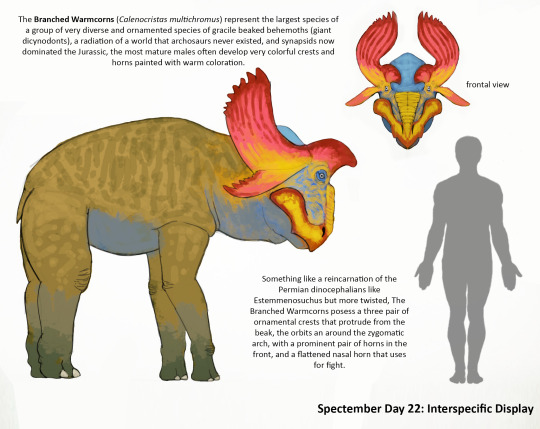
In the late Jurassic of north America, where titanic sauropods, ferocious theropods and a myriad of different dinosaurs should roam there I instead titanic dicynodonts and derived elephant sized Traversodontids wanders on the forests, hunted down by a variety of predatory Mammaliaforms and diverse cynodonts, and below many minor other synapsids and small new diapsids roams as middle size fauna, this world never saw any archosauromorphs rise as they became extinct in the Permian, leaving the Triassic and Jurassic to be fully dominated by the second wave of synapsids after the great dying and the minor constrains of an even weaker Triassic/Jurassic mass extinction.
With that and the time given it allowed some groups to diversify in ways they couldn’t have done in our timeline, specially for dicynodonts which apart of being the largest terrestrial animals here they also have been experimenting in other niches as aquatic herbivores, scavengers and even some small carnivores, and so many herbivores developing different fighting or extravagant ornaments in order to show their strength and good gene pool for any possible mate. This is where the Branched Warmcorns (Calenocristas multichromus) comes into play, coming from a lineage of more gracile forms than the usual beaked behemoth, they are around 2 meters long and they are the largest most flamboyant animals of the forestall regions, the young males and females are often dull colored with only a handful of prominent minor crests and horns, but an adult male in their peak would expose a series of very large ornamental crests and horns that bright in very warm colorations, including a variety of yellows, pinks, oranges and reds, all reflecting from a light blue face up to the back of the head. The bright adult has often to be dealing either with predators as well with other large males or just recently grown younger individuals that defy their domain over specific territories, normally with constant head ramming and even biting. They live in groups of 20 individuals, often a bull male is surrounded by different age females and just young individuals, which males reaching certain age have to leave before the main male could threat them or even kill them.
107 notes
·
View notes
Text

Araeoscelis gracilis was a superficially lizard-like animal that lived during the mid-Permian, around 275 million years ago, in what is now Texas, USA. About 60cm long (~2'), it had a slender body, proportionally long legs, and a solidly-built skull with strong teeth, suggesting that it was a fast runner that specialized in cracking open the carapaces of thick-shelled prey.
It was one of the last known members of a lineage known as araeoscelidians, which are usually considered to be very early members of the diapsid reptiles – but a recent study has proposed they might have even more ancient roots than that, possibly being a branch of stem-amniotes instead.
———
NixIllustration.com | Tumblr | Twitter | Patreon
#science illustration#paleontology#paleoart#palaeoblr#araeoscelis#araeoscelidae#araeoscelidia#diapsida#reptile#amniote#art#lov the cronch
315 notes
·
View notes
Note
You mentioned in your big comprehensive “reptile” post that the scales of lepidosaurs form differently from other diapsids and I’m really curious about the differences!
Oh man lepidosaur (lizards + snakes + tuatara) scales are WEIRD
they overlap, a lot, which is not a thing in other groups
they come from a different layer of the skin than the "scales" of crocodilians/turts/birds/mammals - the latter all have their scutes come from the dermis, while the scales of lepidosaurs are from the epidermis
technically, the things in those groups are scutes, not scales. scales are specifically a Lepidosaur thing.
Lepidosaurs shed their scales all at once in order to grow bigger. other amniotes do not do this.
the scales of lepidosaurs are covered in a horny sheath that the scutes of the other reptiles and mammals don't have
so, yeah. technically, scales are only found in lepidosaurs. Crocodilians, Turtles, Birds, and Mammals only have Scutes.
This is a nuance no one will ever learn except scientists but I can dream, right?
155 notes
·
View notes
Note
I hope Bilbo's feeling better, poor buddy!
If you were to create a scientific name for dragons/drakes, what would it be? In my fantasy writing they're a clade of non-archosaur diapsids and I'd love a professional recommendation lol.
Thank you, Bilbo's feeling much, much better and finally has his appetite back today!
That's a fun question! Here are my personal picks...
Draconis could be the genus for your standard Western-fantasy-style dragons. Maybe Draconis draconis as the type species for your typical Medieval guys, Draconis ignis for fire-breathers, etc. I thought about Draco but that's already an occupied genus, taken by flying lizards (the real ones).
For not-quite-dragons like wyrms, wyverns, and amphitheres, Pseudodraconis would be a genus name that makes a lot of sense and has strong real-world precedent.
Knowing how eurocentric naming conventions have been in the past, Asian dragons would probably get lumped into something like Draconis orientalis. I'd totally put them in a separate genus, though. Maybe Sindraconis?
176 notes
·
View notes
Text
March Madness: Day 1
Let thw competition begin! This year the theme is Animals Commonly Mistaken for Dinosaurs.
The first two competitors are Dimetrodon

And Nothosaurus.

So, why aren't these guys actually dinosaurs? Here's a few reasons:
1.) Dimetrodon lived 33 million years before the first dinosaurs appeared.
2.) The hip and femur connections for both animals creates a sprawled stance. Dinosaurs stand upright.

3.) Nothosaurus is a marine animal. Dinosaurs are terrestrial.

4.) Dimeteodon is a synapsid meaning it has only one temporal fenestrae in it's skull (whole behind the eye). That makes it more closely related to us.

Dinosaurs are diapsids meaning they have two temporal fenestrae.

So which one do you like best? Let me know so we can help your favorite move to the next tier! REBLOG for DIMETRODON.
LIKE for NOTHOSAURUS.
Voting ends March 15 before Tier 2 starts.
20 notes
·
View notes